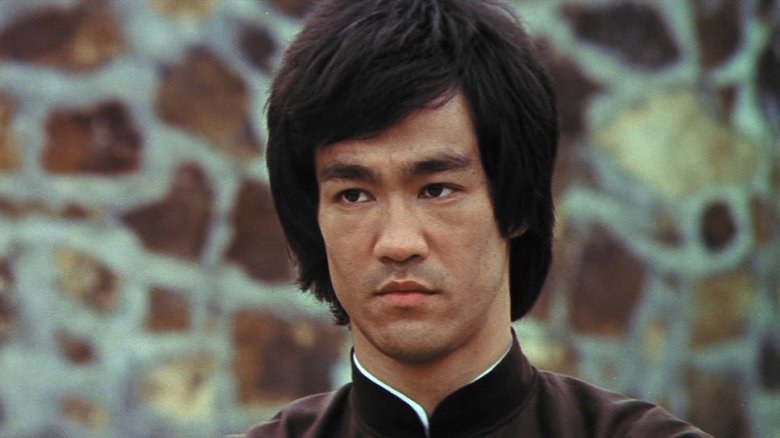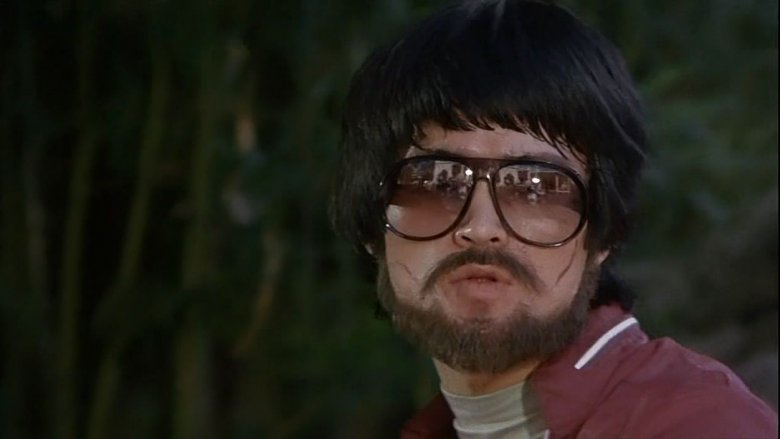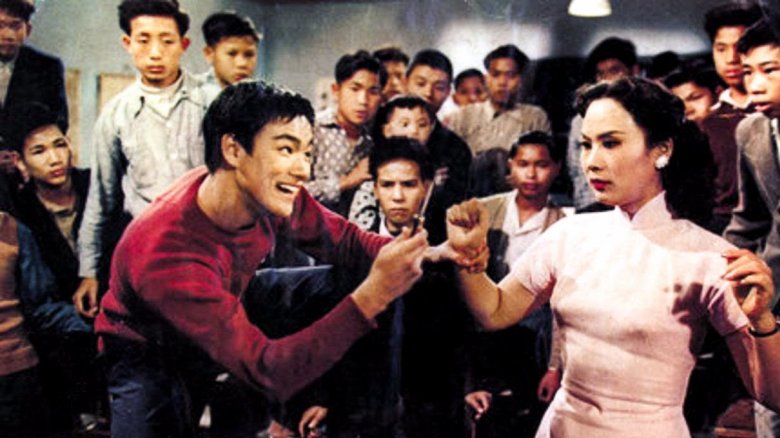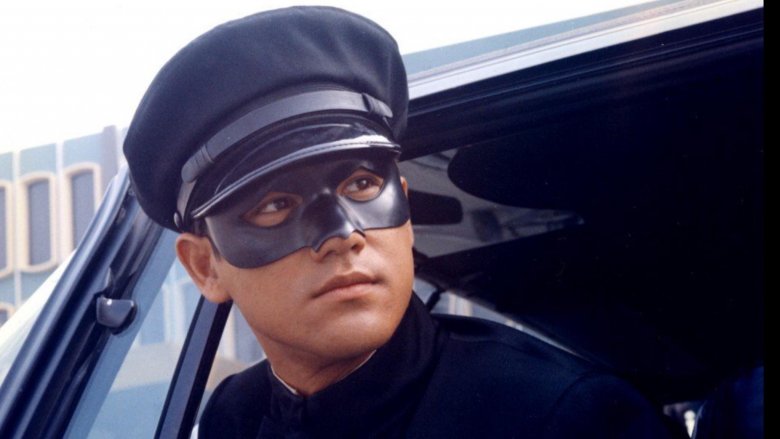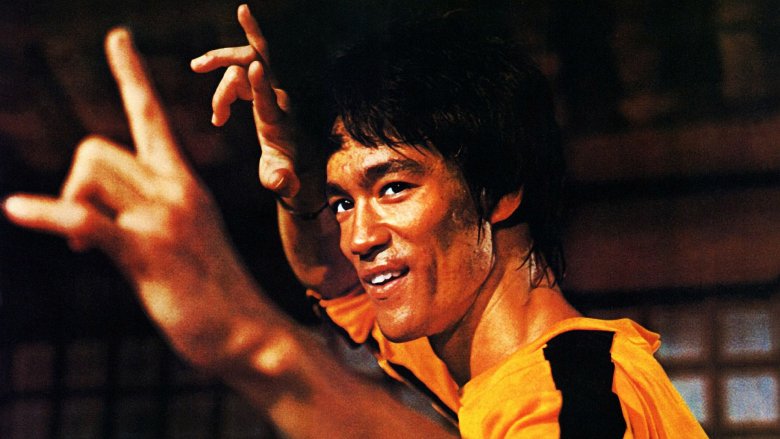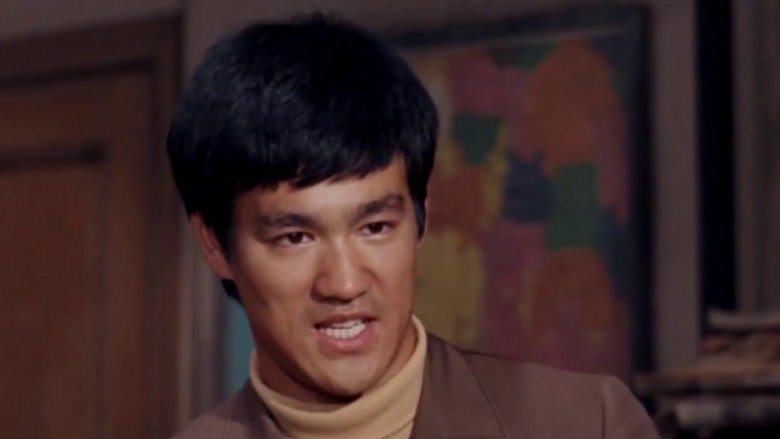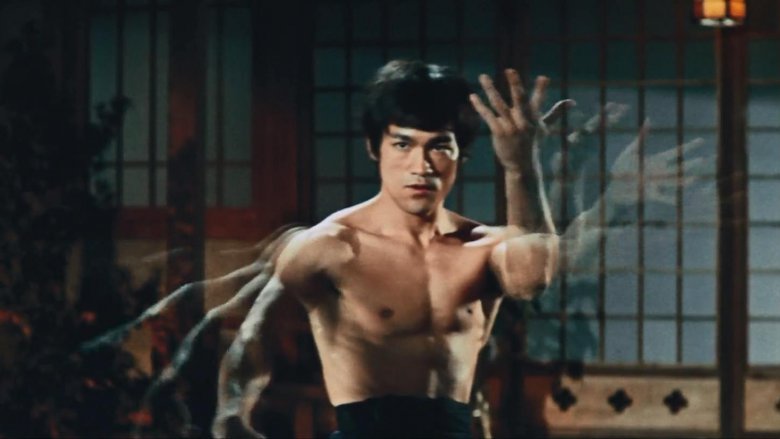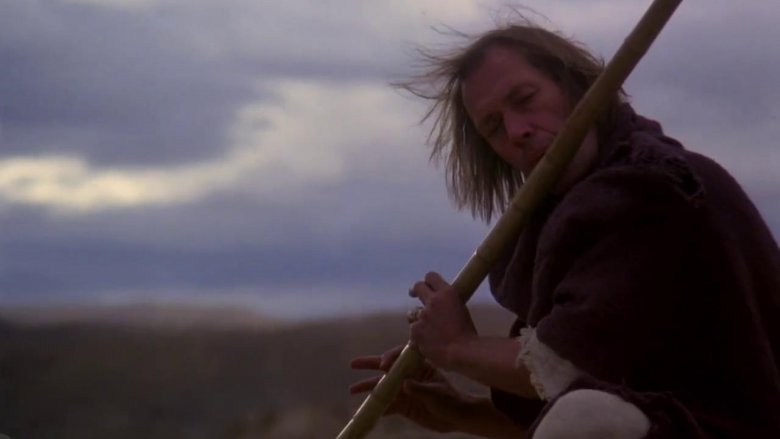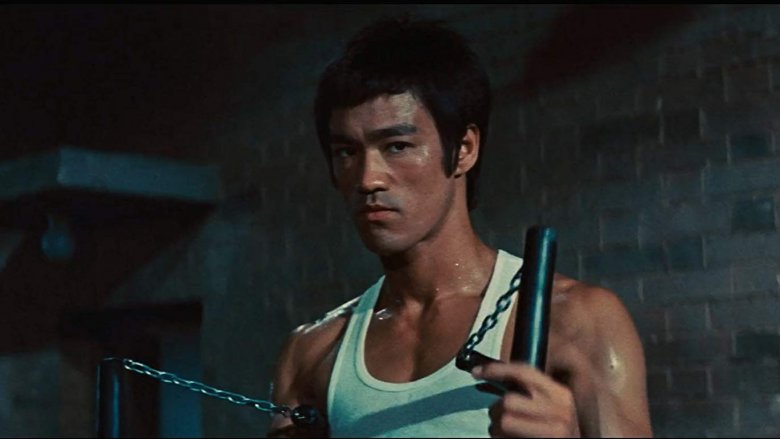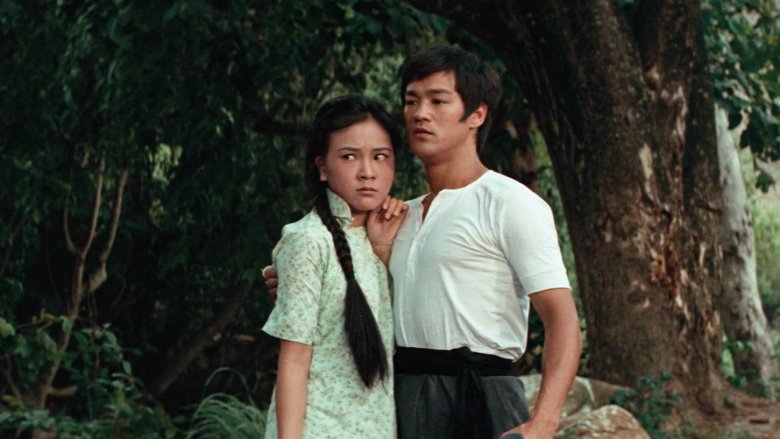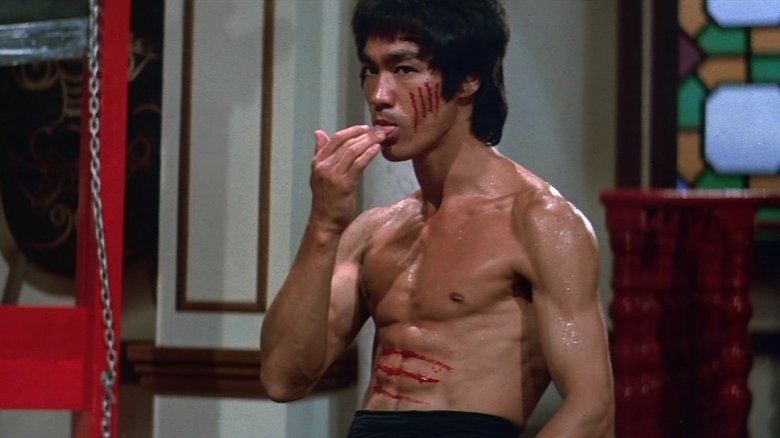The 5 Best And 5 Worst Bruce Lee Movies
It's been nearly 50 years since Bruce Lee died suddenly in the prime of his life and career at the age of just 32, but his legend lives on in ways that even he never could have imagined. Lee's image is synonymous with mastery of one's own body and mind, his films remain classics in their genre, and tales of his ability to deliver one-inch punches that would knock a man across the room or do push-ups with only a couple of fingers are still the stuff of modern legend.
In a screen acting career that spanned nearly his entire life, Lee worked first as a child star in Hong Kong, then made his way to California to begin a career in film and television, which after years of struggle led him back to Hong Kong to make martial arts films. There, he developed into a kung fu cinema icon, and was on the verge of international superstardom at the time of his death. In celebration of that long and varied career, with a special focus on his most famous work as a martial arts star, here's a look at the best and worst of Bruce Lee's films.
Worst: Game of Death
Game of Death was, famously, a film built around the footage Bruce Lee left behind from his unfinished final film, most of which consisted of fight scenes on various levels of a pagoda. Enter the Dragon director Robert Clouse took that footage and integrated it into a new story about a martial arts movie star being hunted by a crime syndicate. It's also, famously, a film that integrates footage of Lee from other movies, and at one point even uses footage of Lee's actual body in his casket, to often jarring effect.
If Game of Death had simply been made as a '70s martial arts flick full of subterfuge and slick fight scenes, it wouldn't be a bad movie at all. As it is, the footage that doesn't try to trick you into thinking you're watching Bruce Lee is solid, the opening credits are killer, and John Barry's score is perhaps the best thing about it. Watching it in context as a film cobbled together from Lee's unfinished work, though — particularly when Lee shows up for his own choreographed fight sequences — makes it a trying viewing experience, and a sad reminder of what might have been.
Best: The Orphan
Bruce Lee's legacy is largely wrapped up in the kung fu films he made in the final years of his career, which turned him into a legend not only in the film world, but in the worlds of martial arts and pop culture in general. Bruce Lee is now regarded as one of history's greatest indestructible warriors thanks to his reputation as a martial artist and a physical fitness enthusiast, but it's also important to remember that he was an actor who took his craft seriously well beyond how good it looked when he launched one of his legendary kicks in front of the camera.
So, while we're primarily focusing on Lee's later career in kung fu cinema here, we'd be remiss if we didn't bring up some of his earlier work as a child and young man in Hong Kong. Of those films, The Orphan is perhaps the best regarded, and it's easy to see why. It's basically Lee's version of Rebel Without a Cause. He stars as Sam, an orphan juvenile delinquent who's taken in by a kind headmaster as he struggles against a local Triad leader and his own poor judgement after years of life without a father or mother figure in his life. Lee is fantastic in the film, and you can see the tremendous energy he'd bring to his later work pouring out of him even as a teenager.
Worst: The Green Hornet
Bruce Lee's first major introduction to American audiences, and his first television role, was as Kato in The Green Hornet, the superhero action-adventure series in which he stole the show as sidekick to the titular masked hero (played by Van Williams). The show was successful in America, but overseas it made Lee an even bigger star, to the point that in Hong Kong it became known as "The Kato Show" because audiences were so captivated by him.
Lee's international popularity as Kato, combined with the mythology that sprung up around him after his untimely death in 1973, led Fox to consider repurposing the old Green Hornet episodes to capitalize on his fame. So, in 1974, they cut together several episodes from the 1966-67 series and released them as a feature film. It did well in some markets, but as you might expect from a heavily episodic series like The Green Hornet, it doesn't actually work all that well as a movie with a narrative throughline, and the fight scenes cut in at odd intervals to add some extra action to things don't improve that.
Best: The Game of Death
The Game of Death is not technically a feature film, because Bruce Lee died before he had the chance to finish it. He was already at work on the film when he had to set it aside to make Enter the Dragon, and shortly after that film was completed he was gone at the age of 32. What we have now only exists as a short film cut together in the documentary Bruce Lee: A Warrior's Journey, but that doesn't mean it's any less essential to Lee's filmography.
The Game of Death was supposed to star Bruce Lee as a retired martial artist who is coerced into being part of a team sent to retrieve something valuable from the top of a mysterious pagoda, each level of which is guarded by a martial artist with a different fighting style. The film's climax, much of which Lee had already shot at the time of his death, featured Lee in the now-famous yellow tracksuit taking on these martial artists in a variety of precisely choreographed battles, culminating in a fight with Kareem Abdul-Jabbar's character at the very top.
Watching The Game of Death is a bittersweet experience, because while we'll never get to see the full film, seeing what Lee was able to do with this level of creative control and precision remains astonishing. He really was just getting started.
Worst: Marlowe
Marlowe, an adaptation of a Raymond Chandler novel starring James Garner as another big-screen incarnation of the titular private investigator, features Bruce Lee's first major American film role, though he doesn't get that much screen time. Most of the film is a kind of breezy neo-noir hangout experience, in which Garner's Marlowe moves through Los Angeles on a missing person case that turns out to be something much bigger, which takes him from the home of a movie star to a dance club and a number of places in between.
Lee, who was also the film's fight choreographer, plays Winslow Wong, an enforcer who shows up to offer Marlowe money to leave the case alone because certain people would like it that way. He makes quite an impression in the opening seconds of his appearance, kicking a hole through a wall and chopping a coat rack in half, and then gets one more scene to show off his signature side kicks before falling to his death in a rather goofy way. Marlowe's not a bad movie, but it's far from the best Raymond Chandler adaptation, and as a Bruce Lee movie it functions as very much a "Hey, that's the guy from The Green Hornet!" kind of role.
Best: Fist of Fury
Bruce Lee's second major Hong Kong effort, after The Big Boss, re-teamed him with director Lo Wei for the story of a martial artist who returns to his school to find that his master has been murdered. Lee's character, Chen Zhen, sets out on a quest for revenge in a battle of Chinese vs. Japanese factions featuring fight after fight, all culminating in a cliffhanger ending that remains one of the best moments in any of Lee's films.
Fist of Fury is the film that features the legendary moment when Lee flexes his back and his lats spread out like the head of a cobra, as well as the legendary moment when he launches a flying kick so powerful he knocks a man through a wall and out into a garden. It's packed with signs that Lee knew he was onto something, and that if he just kept pushing for more of his personal style to find its way into the films that he was headed for greatness. There's a confidence here that even The Big Boss, a confident film in its own right, just doesn't have, and it's exemplified by that final, defiant kick.
Worst: Circle of Iron
At the time of his death, Bruce Lee was working on a number of big ideas that he would sadly never live to finish. One of them was a martial arts fantasy film that he hoped would one day articulate his persona martial arts philosophy through a cinematic story that also illustrated the differences between Eastern and Western ways of thinking about personal improvement. Titled The Silent Flute, Lee worked on the idea with his friends and students, actor James Coburn and screenwriter Stirling Silliphant, and later set it aside for other projects.
In 1978, a retooled version of Lee's concept, dedicated to his memory, was released as Circle of Iron, the story of a fighter with no established style (Jeff Cooper) journeying through a series of trials with the help of a mystical guide (David Carradine) who appears with many faces.
The film has since become a cult classic (David Carradine dispensing wisdom while playing a massive flute in Kill Bill Vol. 2 is something of an homage) because of how weird and stagey it can be, and it's interesting to watch as an artifact of a particular time in cinematic history and as a piece of Lee's legacy. Sadly, as a Bruce Lee movie, it just doesn't work. You can't help but imagine how much better and more detailed the action would have been, and how much clearer the storytelling might have turned out, had he been around to shepherd the film himself.
Best: The Way of the Dragon
The Way of the Dragon is the first film in which Bruce Lee officially stepped into the role of both director and screenwriter on his films, giving him more creative control than he had on The Big Boss or Fist of Fury. The story is a relatively simple kung fu movie convention — a martial artist heads to a foreign land to be an enforcer in a fight to save innocent people from a tyrannical crime boss — but more than any of his previous films this one is infused with Lee's personality, sense of humor, and sense of pacing.
Because of that, Way of the Dragon is funnier than Lee's previous Hong Kong films, as he plays the fish out of water with an outsized sense of fun. It's also got a more ambitious sense of action, as exemplified by the scenes in which he single-handedly takes on a gang of thugs inside the restaurant at the center of the conflict. Most famously, though, this is the film in which Bruce Lee fights Chuck Norris, who made his big-screen debut with Way of the Dragon. That fight, which is set at Rome's Colosseum, seems like the kind of thing you'd build up in your mind to be better than it could ever actually be onscreen. And yet, somehow, it still holds up as one of the coolest things in martial arts cinema.
Worst: The Big Boss
Bruce Lee's first major leading role in a martial arts film was in The Big Boss, the film he made after returning to Hong Kong following a frustrating time in Hollywood, only to discover that he was a massive star there thanks to The Green Hornet. Lee plays Cheng Chao-an, a young man who moves from China to Thailand to live with family members who are unknowingly connected to a drug smuggling ring run out of an ice factory. Things start to get rough almost immediately, but Cheng can't fight because of a promise he made to his mother never to get involved in violence.
Let's be clear: The Big Boss is a good movie. It just happens to be the worst of the major martial arts films that Lee had completed at the time of his death, simply because he hadn't been in pursuit of a cinematic perfection in Hong Kong cinema for all that long by the time it was made. There are some terrific fight scenes here, particularly the final one, and Lee's onscreen swagger is palpable. When viewed alongside his later work, though, you see just how much further he could really push himself.
Best: Enter the Dragon
It is impossible to separate the release of Enter the Dragon from the death of its star. Bruce Lee died just weeks before this film — a co-production that united Warner Bros. Pictures and Lee's own Hong Kong-based company, Concord — was released in America, and while it was supposed to make him a global star by bringing his Hong Kong kung fu stylings to a bigger audience, in death it made him an icon. Enter the Dragon remains one of the most culturally significant films of the 1970s, a watershed moment that informed and influenced countless martial arts films that came after, as well as action cinema in general.
Even when you try to look at the film outside the context of Lee's death, which amplified its influence and mythic significance, you'll still see a masterpiece. Watching Enter the Dragon as a piece that follows the successes of The Big Boss, Fist of Fury, and Way of the Dragon reveals a young star who was pouring everything he'd learned from his past hits into this one, perfection-seeking megahit. It remains a riveting film, from Lee's "emotional content" speech near the beginning all the way to that legendary mirrored room fight scene at the end.
